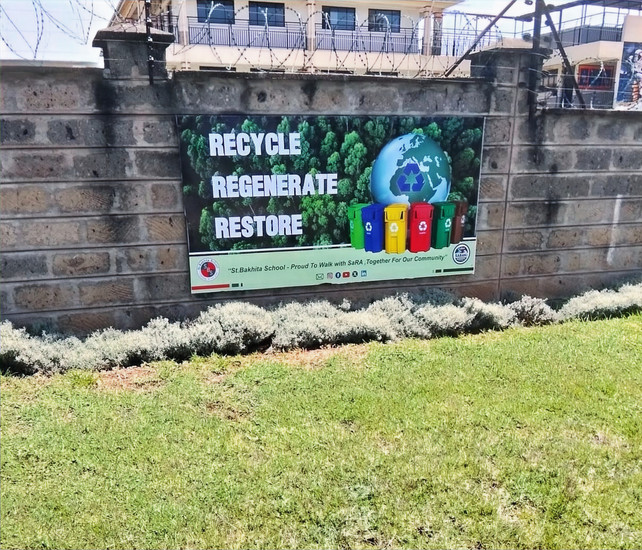- Oct 30
- 4 min read
Updated: 4 days ago
By Moraa Nyangorora
Communities turning climate shock into health solutions in the wake of a crisis; relief agency launch over Kshs2 billion appeal.
Kenya is grappling with the twin crises of floods and drought threatening over 2.1 million people.
The Kenya Meteorological Department issued a nationwide advisory warning of intense rainfall, strong winds, and possible landslides in several counties.
The warning, highlights the need for heightened disaster preparedness as rivers overflow and infrastructure strains under persistent downpours.
In response, the International Federation of Red Cross and Red Crescent Societies (IFRC) has launched a KShs 2.42 billion appeal for emergency funds to support flood-affected communities.
It warns of a complex humanitarian and health emergency.
The IFRC notes that thousands have already been displaced, with early assessments showing destruction of homes, farmlands, and local roads.
“The situation requires urgent international support to scale up relief operations and strengthen local preparedness capacities,” the IFRC said in its statement.
The 15 million Swiss Francs appeal targets to assist over 300,000 people across health, nutrition ,shelter, water and livelihoods.
The appeal is in coordination with government authorities in Kenya and humanitarian partners.
It estimates that about 1.8 million people need urgent food assistance, with the numbers projected to rise to 2.1 million by early next year.
Baringo, Mandera, Marsabit and Turkana has the highest number of the most vulnerable with cases of acute malnutrition reported.
Other parts of Kenya; Narok South western Kenya have confirmed deaths from waterborne diseases like cholera.
"A united response is critical. Urgent and coordinated action from government, humanitarian partners, and the private sector is required to ensure no Kenyan goes hungry. Collective efforts today will save lives and enable communities to recover and rebuild for a more resilient future".
IFRC
Red Cross officials on the frontline with medics attending to suspected cholera cases in Narok
© Kenya Red Cross Society / IFRC
There is a resurgence of Cholera outbreak reported in Narok, South Western Kenya; 55 cases suspected, 6 confirmed, 5 deaths recorded.
The arid and semi areas of Kenya , and the Rift Valley are experiencing loss of livestock from zoonotic diseases.
A Kenya Red Cross volunteer assists residents to safety during floods in Garissa County. The response includes early warning alerts and evacuation support.
© Kenya Red Cross Society / IFRC
In Garissa County, pastoralists still reeling from livestock losses in recent prolonged drought, are now experiencing more losses from the flash floods.
Journalist Osman Ahmed Maalim of KBC reports that in Shimirey village, the heavy rains have claimed goats leaving livestock farmers frustrated.
KBC's journalist Osman Ahmed Maalim captures pictures of prevailing situation in Shimirey village in Garissa- from recent drought to floods . Weather extremes threatening livelihoods.
Communities Building Resilience
Communities across the country are quietly building resilience through early warning systems, climate-smart water solutions, and public health interventions.
In Garissa, where floods have repeatedly displaced families, local disaster committees are collaborating to map flood-prone zones and deliver early alerts via mobile messaging.
This helps communities move to safer ground before rivers overflow.
Further away in, Turkana and Mandera, women’s cooperatives supported by the National Drought Management Authority (NDMA) have introduced solar-powered boreholes and water purification kiosks.
These initiatives provide clean water during droughts, reducing disease outbreaks linked to unsafe water sources.
Around the lake basin the WeTu initiative is providing a large-scale model of how technology and clean energy can improve both water access and community health.
The social enterprise operates 14 solar-powered hubs and water ATMs across four counties, supplying safe water and electricity to tens of thousands of residents.
The project has installed more than 300 kilowatts of solar capacity and serves over 50,000 people with affordable, clean water and lighting.
The integration of renewable energy with water safety, is improving health resilience in climate-affected regions.
CLIMATE SMART HEALTH SYSTEMS
The Ministry of Health in its climate and health strategy spells out initiatives that are integrating climate and health surveillance.
This enables hospitals to anticipate malaria and cholera spikes tied to rainfall and temperature changes.
Community radio stations like Vox Radio formerly Amani Radio in Tana River are providing critical information related to weather updates and hygiene messages in local languages.
This is, helping prevent disease outbreaks. These localised communication efforts ensure that early warnings reach even remote communities , turning information into a powerful resilience tool.
Solutions in Motion: Local Innovations Reducing Climate-Health Risks
Region | Solution | Impact |
Garissa | SMS flood alert system | Early evacuation, reduced fatalities |
Turkana | Solar-powered boreholes | Clean water access for 1,500 households |
Mandera | Women-led water kiosks | Lower incidence of diarrhea diseases |
Lake Victoria region | WeTu solar water hubs | Safe water for 50,000+ residents |
Tana River | Community radio alerts | Faster public health response |
Connecting Local Action To Global Agenda
Kenya’s efforts mirror a wider continental push under the African Health Adaptation Strategy and discussions leading to COP30 in Brazil, where climate-health resilience is a key focus.
The IFRC emphasises that protecting health systems from climate impacts, requires investment in local preparedness, community-led adaptation, and sustained humanitarian support.
Kenya’s growing network of community responders, innovators, and social enterprises like WeTu show that solutions are already emerging on the frontlines, what remains is to scale and sustain them.
What's Working; At A Glance
Community-based early warning systems save lives
Solar-powered hubs and boreholes improve water access
Health facilities using climate data for disease surveillance
Local media and digital tools driving behavioural change
_150x.png)





























































